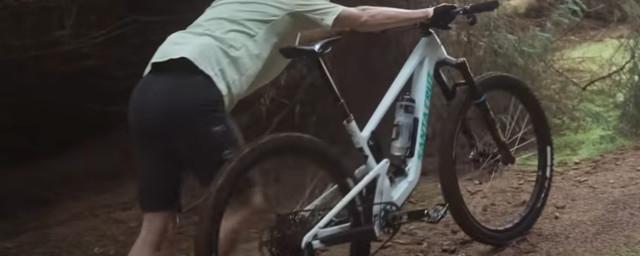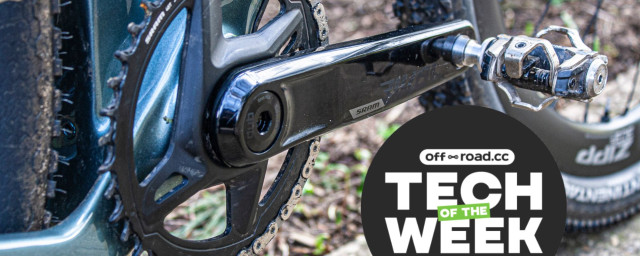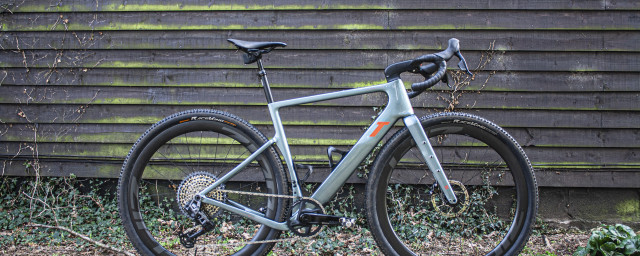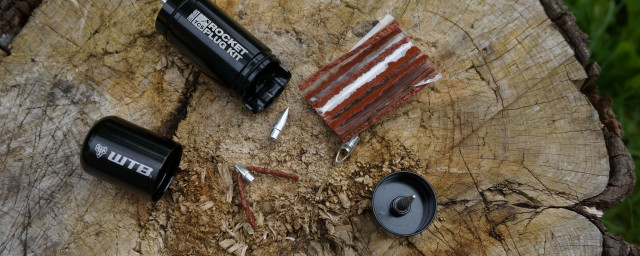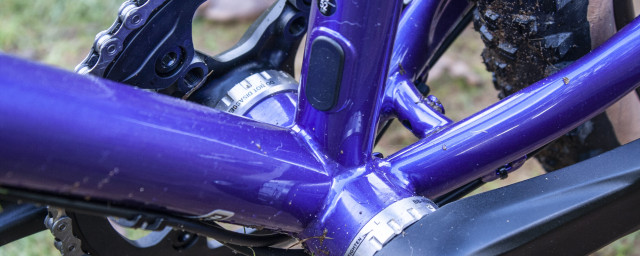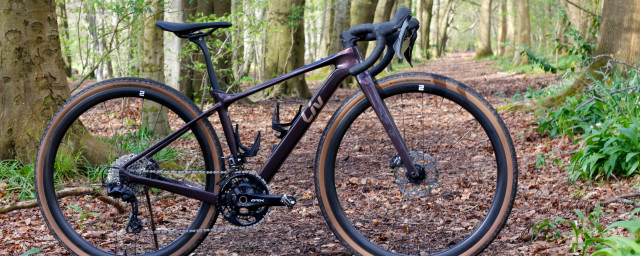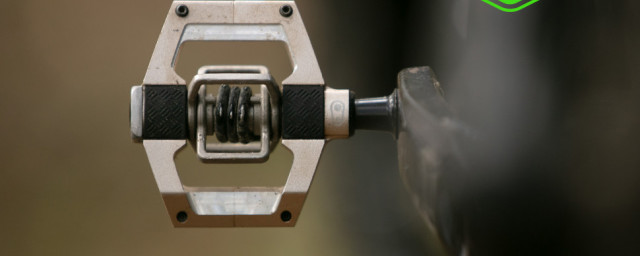Buying your first mountain bike can seem like a complex affair, with a huge variety of bikes at a staggeringly wide range of prices. While it's possible to spend thousands, you really don't need to break the bank to get out riding in the hills, but there are some key things you need to know to make sure you get the most for your money.
- The best mountain bikes for under £600 - our top picks
- The best mountain bikes for under £1,000 - the best budget buys ridden and rated
- The best mountain bikes you can buy for under £1,500 - full sus and hardtails
[Updated 6th June 2020]
What should I spend?
While you can get something that looks like a proper mountain bike from as little as £50 from supermarkets or catalogue stores, a bike at this price simply isn't up to the task of genuine off-road riding. It will have a weak, heavy frame made from low quality steel rather than lightweight aluminium and poor quality components that, while just about up to the task of riding towpaths or city streets, won't last very long if you take it on more challenging terrain. For your own peace of mind, it's worth investing a little more money to guarantee a good experience – the last thing you want is your bike failing miles away from anywhere.
We reckon that you should really budget around £350 as a minimum. That might seem a lot, but you'll be guaranteed a bike that can deal with all but the most extreme terrain without falling apart after a couple of outings. Spending more also means that the bike will be lighter, making getting up the hills much easier. Stretching that budget to £500 will get you a generally well-sorted bike that's designed with mostly off-road riding in mind, while pushing the budget even higher will bring even greater weight savings, smoother gearing with more ratios and better quality components. That brings us neatly on to the next thing you need to consider.
- The best mountain bikes for under £600 - our top picks
- Buyer's guide to kid's mountain bikes - get the best MTB for your child
Do I need suspension?
Most bikes at this sort of price will also have some form of front suspension, known as a hardtail design. The travel on offer from the front fork will commonly vary from 80mm to 120mm, with forks getting lighter, more easily adjustable and with better bump taming performance as you start to spend more. A suspension fork really helps take the sting out of rough terrain and can help you ride with greater control and in greater comfort for longer, but at this price, the amount of travel isn't really as important as the quality of damping control it offers. Harsh, notchy, noisy and heavy forks are still common sights on the very cheapest bikes and these can often be a real disadvantage when it comes to staying in control.
If you intend to mostly use your bike on smoother trails or you're on a really tight budget, then a rigid bike – one without any suspension at all – can make a lot of sense. That might seem like a disadvantage, but cheaper suspension forks are often heavy and don't perform particularly well, though big steps are being made in recent years. A well made rigid fork will be much lighter and also less expensive, meaning more money for the manufacturer to spend elsewhere on the bike.
One thing you should probably avoid is any kind of full suspension design. While there are plenty of bikes out there that look like they should work, thanks to the extra complexity of building a full suspension frame, plus the extra parts needed, it's very likely that corners will have been cut in order to get a bike to a low price and you'll end up with an extremely heavy and poorly controlled machine that's more likely to hinder you than help when the going gets rough. As a rule, if you want a full suspension bike that's up to the job, you should budget at least £1000. While there have been some good budget full suspension machines available for a bit less than that sort of money, they are few and far between and will still suffer from a significant weight penalty.
- The nine best value hardtails for under £600 are here
- The best hardtail and full suss bikes for under £1000
What size frame should I get?
Most manufacturers will give a size guide with the seat tube length (in inches, for mountain bikes) and possibly a frame designation (eg Medium or Large) that also references rider height. That's certainly a good starting point, but we can't stress enough how important trying the bike's fit for yourself is. A quality local bike shop is a useful aid here, as they will be happy to help you with sizing as well as any other queries you might have. The aim is generally to get as large a frame as possible, while still maintaining enough standover – the clearance between you and the top of the bike frame when you're standing over it with both feet on the floor – to allow for rapid dismounts. You'll probably appreciate why that's so important, for obvious reasons.
Too large a bike frame can lead to an uncomfortable stretched out riding position, while too small a frame will be cramped and feel nervous when riding, as well as not allowing an efficient pedalling position. It's possible to experiment with cockpit components, such as handlebar and stem length to get fine-tuned, but getting the basics of frame sizing right will save a lot of headaches along the line. A test ride can be invaluable here, so see if it's possible to take a bike out from the shop or consider attending a demo day.
What size wheels are best?
Well, we might as well break you into the whole wheel and tyres size debate early – it's big subject in the world of mountain biking and can cause surprisingly strong feelings in those with a preference either way. Once upon a time, all mountain bikes have 26” wheels, which would be run with a tyre around 2.0-2.5” in diameter.
Along came 29” wheels, whose larger diameter was said to have a greater ability to smooth out bumps – they were less likely to fall into small holes in the trail, so in theory, momentum would be maintained over rougher ground. The downside is that the wheel and tyre are inevitably heavier.
That led to the development of 27.5” wheels, which are based on the old 650b touring bike standard and are often referred to as such. The aim was to split the difference and provide a wheel without all the weight of a 29er but with improved performance over a 26” wheel and it's rapidly become the most common wheel size on new mountain bikes at almost every price point.
- Buyers guide to mountain bike tyres - get the best rubber for your MTB
- Is it worth converting your mountain bike to tubeless?
Nowadays, the 26” wheel is rarely found on mountain bikes, apart from the most affordable models. A 29” wheel is often a boon as it can help mask a lack of sensitivity in the fork as well as providing more stable handling and increased grip. Some do complain that the big wheels can feel rather dull, which is compounded by heavy wheels, so 27.5” bikes are still very popular.
A new addition is the 'Plus' tyre standard (see above photo), which uses a wider rim paired to a much fatter tyre in the region of 2.8-3.0” wide to give an increased contact patch for extra grip, plus extra cushioning to the rider. They're more commonly seen on more expensive bikes due to their relative newness and the cost of tyres, but they make a lot of sense on hardtails and rigid bikes, where the big rubber acts as a form of suspension.
- The best trail and enduro mountain bike wheelsets, tried and tested
- Your complete guide to the RockShox rear shock range
Regardless of size, decent quality tyres can make a huge difference to how capable and confident feeling the bike is. If you're going to be mostly riding in the dirt, look for an aggressively knobbly design that will dig down to grip. More lightly treaded tyres will be faster rolling on hard surfaces, so choose the right ones for the terrain you'll be riding. The ability to adapt your tyres and wheels to run without innertubes – tubeless – is also a big advantage as it reduces the frequency of punctures. If that's possible, it'll usually be written on the rim and tyre but compatibility tends to be limited to more expensive bikes.
How many gears should it have?
Having a drivetrain that provides a wide enough range – the difference between the easiest and hardest to pedal gear – is also vital to off-road performance. Smaller sized front chainrings and a cassette with bigger sprockets at the rear means plenty of range to get up steep hills, though if you regularly ride tarmac you might find yourself spinning out sooner than you'd hope. Having a cassette with a greater number of sprockets is generally an advantage as it allows smaller steps between gears and a much smoother shift and ride. Many entry-level bikes will only have a seven-speed cassette, but eight, nine or even ten-speed blocks are preferable though increasingly costly to purchase.
As a note, manufacturers will often state the total number of gear combinations; for example, a bike with a seven-speed cassette and three chainrings up front would be referred to as a '21spd' drivetrain. Conversely, a drivetrain with a ten-speed cassette at the back and just two rings up front – often known as a double – could be referred to as '20spd' as well as '2x10spd' and might seem inferior on paper. In practice, the latter combination would have less duplicate ratios and much-improved performance, so bear that in mind. Many modern bikes have just one chainring at the front to save weight (see below) and reduce complication, but the same overall gear range thanks to very wide ratio cassettes.
Anything else to look out for?
A really big boon for any bike that's going to spend a lot of time riding in classic British conditions is a set of brakes that still work when they're wet. That means that car-style disc brakes fitted to the hub of the wheel are infinitely preferable to cheaper rim brakes. They keep working consistently regardless of the conditions and they won't wear out your rims over time. The gold standard for disc brakes are the ones that use hydraulic fluid to operate as they require very little maintenance and offer greater power and feel, but even those that use a cable are still very useable and a great advantage over conventional rim brakes.
Obviously, a comfortable saddle is a must as you'll be sat on it for extended periods and it also helps absorb bumps and vibrations from the trail. Don't be fooled into thinking bigger is better, however, as huge saddles with masses of padding can often be more uncomfortable with prolonged use that slimmer but better-shaped ones.
- Buyer’s guide to mountain bike saddles - get the best saddle for your MTB
- The best knee pads you can buy for mountain biking
While not exhaustive, this guide should have let you in on all the information you should know in order to make the right choices when buying your first mountain bike; set your budget, avoid over complicated and heavy bikes, choose the wheel size that suits your needs and make sure you get the right sized frame.
Good luck and we'll see you on the trails!









